5 June 2006 marks the 39th anniversary of the beginning of the war that led to Israel’s military occupation of the West Bank and Gaza Strip.  In observation of this event, the Institute for Middle East Understanding talked with five prominent Palestinians who have experienced the occupation since it began. We asked them for their most poignant memory of June 1967, what they would like Americans to know about life under occupation, and their thoughts on Olmert’s “Convergence Plan.” The result is “Voices from under Occupation.”
In observation of this event, the Institute for Middle East Understanding talked with five prominent Palestinians who have experienced the occupation since it began. We asked them for their most poignant memory of June 1967, what they would like Americans to know about life under occupation, and their thoughts on Olmert’s “Convergence Plan.” The result is “Voices from under Occupation.”
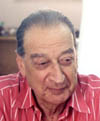 Dr. Gabi Baramki is Special Advisor to the Palestinian Ministry of Higher Education. |
Gabi Baramki
What is the incident or image you remember most vividly from June 1967?
It was the birth of our son Hani on the 10th of June 1967. The Israeli army entered Ramallah on the 7th of June and total curfew was imposed on all the residents. Haifa, my wife, who was nine months pregnant, started labor soon after midnight on Saturday the 10th and we could not wait till daylight to take her to hospital, as she had to deliver by Caesarian section. There was no electricity in the city and we drove our car in total darkness, with Haifa carrying a stick with a handkerchief on it to make a white flag and sticking it out of the window. As we drove slowly in the deserted and dark streets, we were scared that the army patrols could shoot at us, and our tears were running down our cheeks because of the humiliation we felt. We were stopped at the checkpoint not very far from our house, and explained to the soldier our problem. They sent an army jeep to escort us to the Ramallah hospital as we could not reach Jerusalem where our gynecologist and his maternity hospital were. Although Ramallah hospital did not have a maternity ward, they had a very good surgeon that operated on Haifa using an old army standby electric generator. Our son Hani was born at 5 p.m. on that day.
What do you want Americans to know about life today under Israeli occupation?
I want Americans to know the WHOLE truth about life to day under Israeli occupation. They need to come and see firsthand or listen to Americans who visited the area or who have been working with the Palestinians, to learn the unbelievable horrors. How can you believe the daily killing of innocent civilians (called collateral damage), or the uprooting of trees (over 500,000 olive trees and thousands of other fruit trees), or the demolition of houses, or the separation of families from their relatives and friends and from their lands which form their means of livelihood by the “Apartheid Wall,” or the endless hours of waiting at checkpoints (over 600 of them in the West Bank) choking people — young and old — who need to go to their schools, universities, places of employment, or clinics and hospitals.
Israel’s “Convergence Plan” is touted by some as “an end to the occupation.” Do you see it the same way?
Occupation ends by the withdrawal of all Israelis (army and civilians) from the areas Israel occupied in 1967. The “Convergence Plan” is another name for the annexation of almost half of the West Bank, including the rich agricultural land in the Jordan Valley and around Qalqilya and Tulkarm, along with the major underground aquifers that supply the West Bank with its water, both for domestic and agricultural use. The area left is not even contiguous, nor will it be economically viable. If this is the end of occupation, why is it given another name? This plan is a euphemism for the annexation and stealing of the land from the Palestinians.
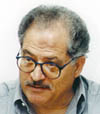 Dr. Khalil Nakhleh is the Team Leader of MU’ASSASAT, the Secretariat for Support to Human Rights & Good Governance NGOs. |
Khalil Nakhleh
What is the incident or image you remember most vividly from June 1967?
When the treacherous attack on Egypt, Syria, Jordan, and Palestine occurred in June 1967, I was in Minnesota, getting ready to start graduate school in Anthropology. I was working in a small factory in St. Paul trying to make some money. My main preoccupation during that time was how to get a shortwave radio to be able to listen to direct news on what’s happening in Palestine. I remember that I was engulfed by a total wave of frustration, impotence, and alienation. I felt that my entire people were being occupied, and the entire world was watching and waiting to see what develops.
What do you want Americans to know about life today under Israeli occupation?
The main point I think the American people need to understand is the meaning of the imposition of military, economic, and social occupation, day in and day out, which deprives the person from really feeling free; breathing freely; planning for little things with confidence that the little plans will not be obstructed by an army jeep here, camouflaged special forces unit there, etc. Israeli occupation does not mean that one sees the Israeli army everywhere all the time; it means that one does not decide on where to walk, where to relax, where to eat, where to study, or pray, or have fun, etc. . . . An army attack on a group of people, or a house, or a street, under the pretext of security, can happen anytime, and at will. Being under occupation is being in a state of continuous slavery!
Israel’s “Convergence Plan” is touted by some as “an end to the occupation.” Do you see it the same way?
It is the utmost of deception and lies. It is another way of depriving the Palestinians of their right to self-determination. It is opening the way, under the conscious legitimacy provided by the U.S., to place a part of the Palestinian people in well-defined reservations, stripped of any natural resources. It is an open, internationally condoned theft of Palestinian patrimony.
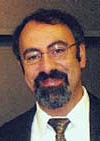 Dr. Issam Nassar is a professor of History at Illinois State University. |
Issam Nassar
What is the incident or image you remember most vividly from June 1967?
I remember the small green tanks that rolled down our streets in Ramallah arriving from the direction of the Latroun Junction to the west. To the eyes of the six-year-old boy that I was, they looked more like toys than like machines of killing and destruction. They were small and they had little helmeted heads peaking out from them. The men in the tanks were watching us as much as we were watching them. This was a conquest — I now know — but at the time, it seemed more like a show in which the actors and the spectators were looking at each other, exchanging gazes. This was a spectacle that had nothing to do with the events of the previous day when an Israeli fighter plane would come so close to our windows that you could practically see the pilot inside. And this happened always moments before sound of gunfire filled the air. On that day, one pilot in particular came very close to us — my mother, sister, and me — before his plane vomited bullets which made large holes in the street on which we were trying to escape to safety. For many years I would walk up and down that street looking at those bullet holes that remained there for almost a decade before the municipal authorities decided to pave the street once again.
The endless line of small green tanks also had nothing to do — visually, that is — with the line of retreating Jordanian Army vehicles that only hours before had passed through our neighborhood in silence, also heading to the east. The men in the green tanks were announcing in what sounded like funny Arabic that any house that did not fly a white surrender flag would be destroyed. The result: my white bed sheet was removed, placed on the broomstick, and flown on the roof of our little home for them to see. It was done in such a rush that nobody paid any attention to the state the sheet was in. A thought crept to my mind: what if the flow of pee that had wet my bed every time a plane came close to the house the previous night was still on the sheets? What if my mother had not changed the sheets after the incident? Did it mean that everyone could now see that I had peed in bed the night before? Worse, could the sheet not be white enough to save our home from destruction?
Although our house survived that day, the ideas that haunted me then continued to do so for a very long time. With the passing of the years, my fear about the flag on that day turned into a sort of sweet revenge. As it dawned on me that that day in June had transformed our lives in ways we perhaps were unable to imagine then, I became sure that the flag we flew was indeed stained with my own pee. It might only be a fantasy, or you could call it wishful thinking, but the mere idea that rather than surrendering that day, we had just welcomed our occupiers with our urine-stained sheets gave me a peace of mind that made the next four decades of life under occupation a little more tolerable.
What do you want Americans to know about life today under Israeli occupation?
Americans need to know that the unjust conditions under which Palestinians live, grow up, and die have been, and are still being made possible through the support Israel receives from the US government.
Israel’s “Convergence Plan” is touted by some as “an end to the occupation.” Do you see it the same way?
There is one way to end the occupation. That is to fully comply with the relevant UN resolutions and withdraw from the occupied territories thus enabling the Palestinian people to exercise their right for self-determination. The “Plan,” as it stands now, does not even come close to offering that. Instead, it provides for a unilateral Israeli annexation of significant portions of the occupied territories and for continued Israeli control of borders, airspace, and water resources. It does not present the Palestinians with any guaranties that Israel will not reoccupy their lands should it desire to do so in the future. More importantly, it is a disguised and self-serving alternative for Israel to maximize its gains in a political climate where their former, more straightforward aspirations have become untenable.
A viable solution must have two parties, and must be based on international legitimacy. Olmert continues to deal with the Palestinians as a nuisance rather than as a nation with legitimate rights. His plan entails the continuous presence of illegal Israeli colonies in the West Bank, does not address the rights of the Palestinian refugees from the war of 1948, and ignores a number of other issues. No “solution” dictated with the characteristically colonial arrogance that Israel has displayed, and continues to display in its dealing with the Palestinian question, will bring about peace and prosperity for the Israeli and the Palestinian peoples — no matter how masterfully it may have been packaged or sold for the benefit of the American people.
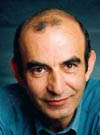 Raja Shehadeh is a lawyer, writer, and founder of the human rights organization Al-Haq. |
Raja Shehadeh
What is the incident or image you remember most vividly from June 1967?
I was leaving our house with my parents to find shelter at the neighbor’s. Israeli war planes were overhead shelling. Dust was in the air. I looked up and saw our neighbor Doctor Ghannam who was suffering from throat cancer standing at the top of his open staircase looking up at the sky. He waved, we waved back. As he rushed us to safety, my father tried to tell him to go in . But the good doctor only smiled and did not move. A few days later the war ended and one of the longest occupations in history began. But Dr. Ghannam was spared. A few weeks later the cancer killed him.
What do you want Americans to know about life today under Israeli occupation?
That it makes the Palestinians resolute. Despite the Israeli acts of killing civilians, demolishing homes, restricting movement, taking land and cutting trees, Palestinians remain tenacious and refuse to give up.
Israel’s “Convergence Plan” is touted by some as “an end to the occupation.” Do you see it the same way?
The plan is only the latest phase of a policy that began a few months after the start of the occupation, of taking land and establishing Jewish settlements to expand the borders of the state of Israel. The occupation does not end when the occupier declares it has but when it withdraws from all the territories it occupied. The “Convergence Plan” does not even claim to do any of this.
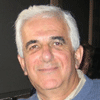 Dr. Salim Tamari is the director of the Institute of Jerusalem Studies. |
Salim Tamari
What is the incident or image you remember most vividly from June 1967?
The image is preserved by a series of photographs taken by UNRWA photographer Myrtle Winter of people crossing the bombed Allenby Bridge on the River Jordan, in the summer heat of June 1967. She captured the grimaces of defeat and agony as thousands of men, women, and children, carrying the bare essentials, drifted across the bridge towards Jordan. It was a repeat of the 1948 exodus, twenty years later.
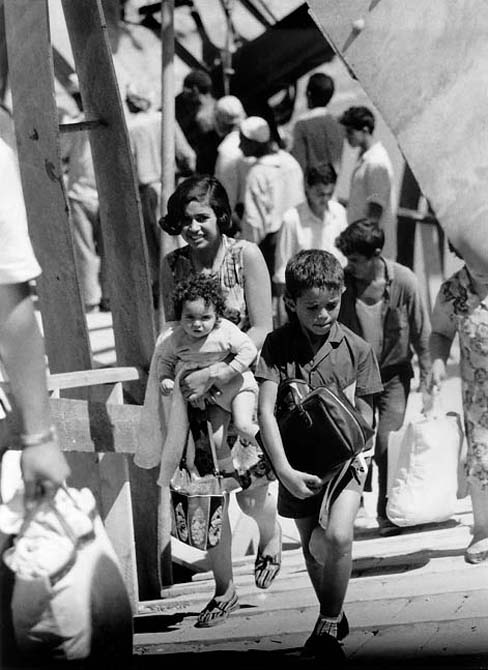
In July 1967, Israel announced plans for the return of displaced Arabs to the West Bank. Half to three quarters of the 200,000 Arabs who fled to east Jordan following hostilities in June 1967 applied to return. By 1972, 40,000 Arabs were allowed back to the West Bank; but, only 3,000 of this number were UNRWA-registered refugees. Photo by Myrtle Winter. (“The Plight Continues,” Al-Ahram Weekly)
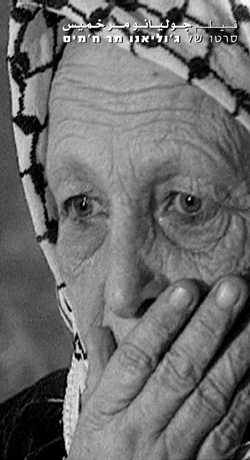 Rent Arna’s Children at NetFlix! |
What do you want Americans to know about life today under Israeli occupation?
Hard to compete with images of global suffering that Americans are exposed to and seem to retain little of them. I would suggest reading Sharon and My Mother in Law, and perhaps see the film Arna’s Children — but you need a strong stomach for this film.
Israel’s “Convergence Plan” is touted by some as “an end to the occupation.” Do you see it the same way?
No. It consolidates the Israeli colonies in condensed blocks and maintains control over the population and resources by remote military measures. The undeclared part of the plan identifies the Jordan Valley (25% of the West Bank) as the Eastern flank of Israel’s boundaries.
